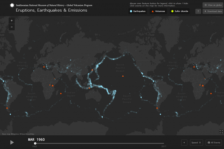Browse Resources
(20 classifications) (41 resources)
| Arctic regions
(2)
Arizona (1) Bibliography (1) California (6) Colombia (1) Computer simulation (1) Databases (1) Exhibitions (1) Iceland (1) Maps (10) |
Northwest, Pacific
(1)
Observations (10) Pictorial works (2) Research (9) San Francisco (Calif.) (1) Statistics (9) Study and teaching (19) Turkey (2) United States (3) Washington (State) (6) |
Resources | |||||||||||||||||||||||||||||||||||||||||||||||||||
|---|---|---|---|---|---|---|---|---|---|---|---|---|---|---|---|---|---|---|---|---|---|---|---|---|---|---|---|---|---|---|---|---|---|---|---|---|---|---|---|---|---|---|---|---|---|---|---|---|---|---|---|
| |||||||||||||||||||||||||||||||||||||||||||||||||||
| ← Previous | Next → | ||||||||||||||||||||||||||||||||||||||||||||||||||







